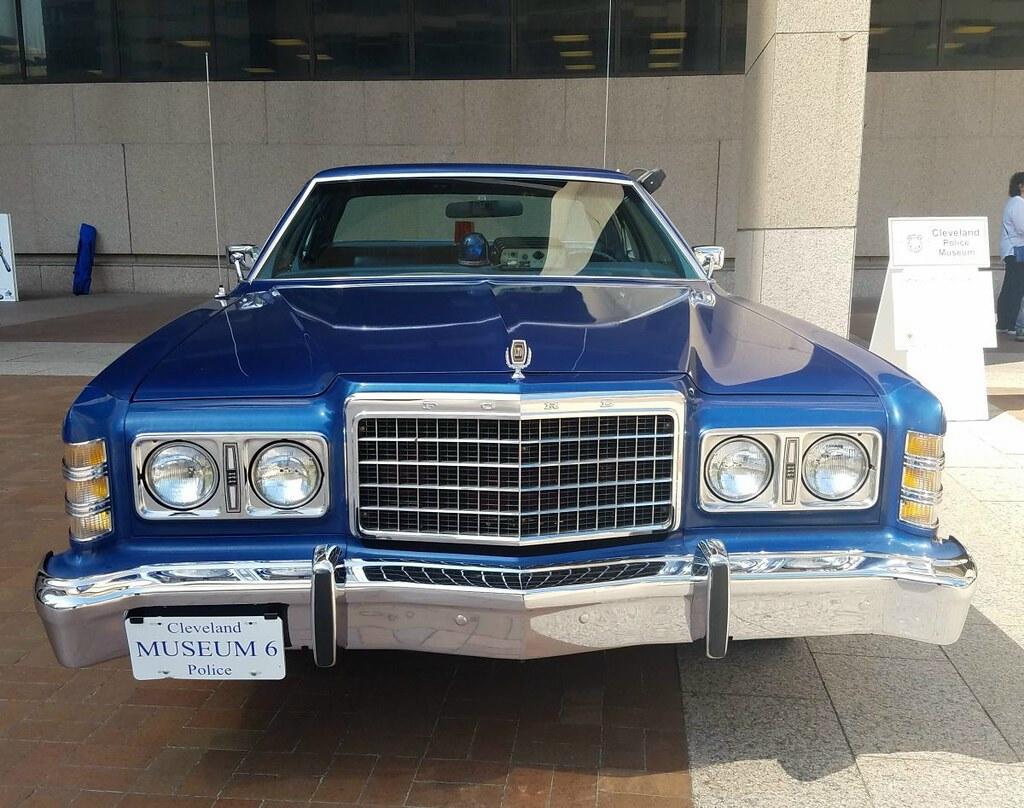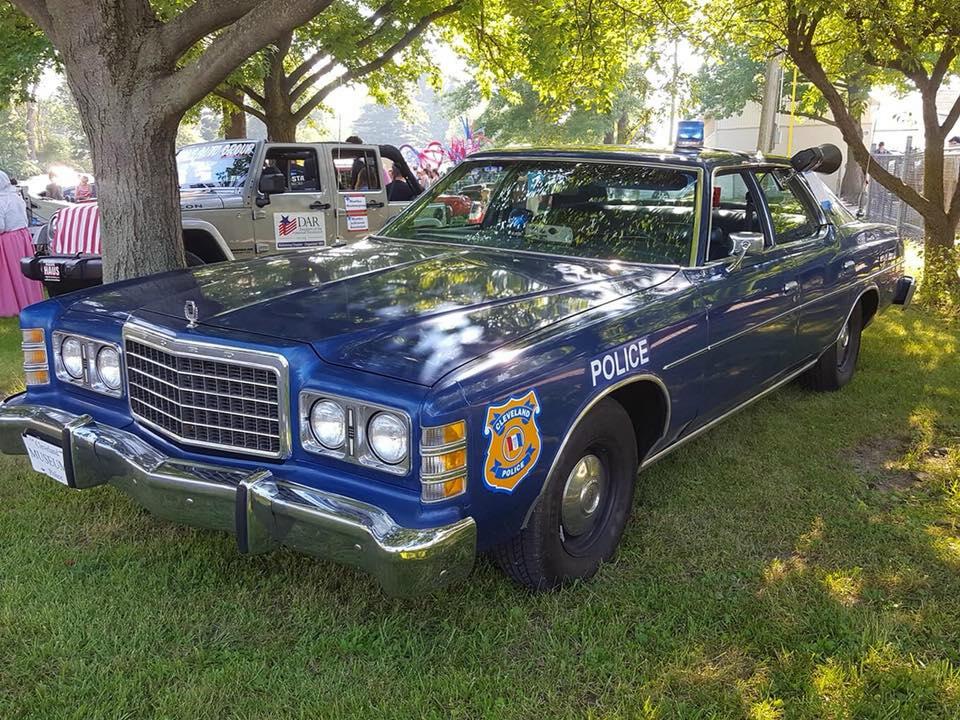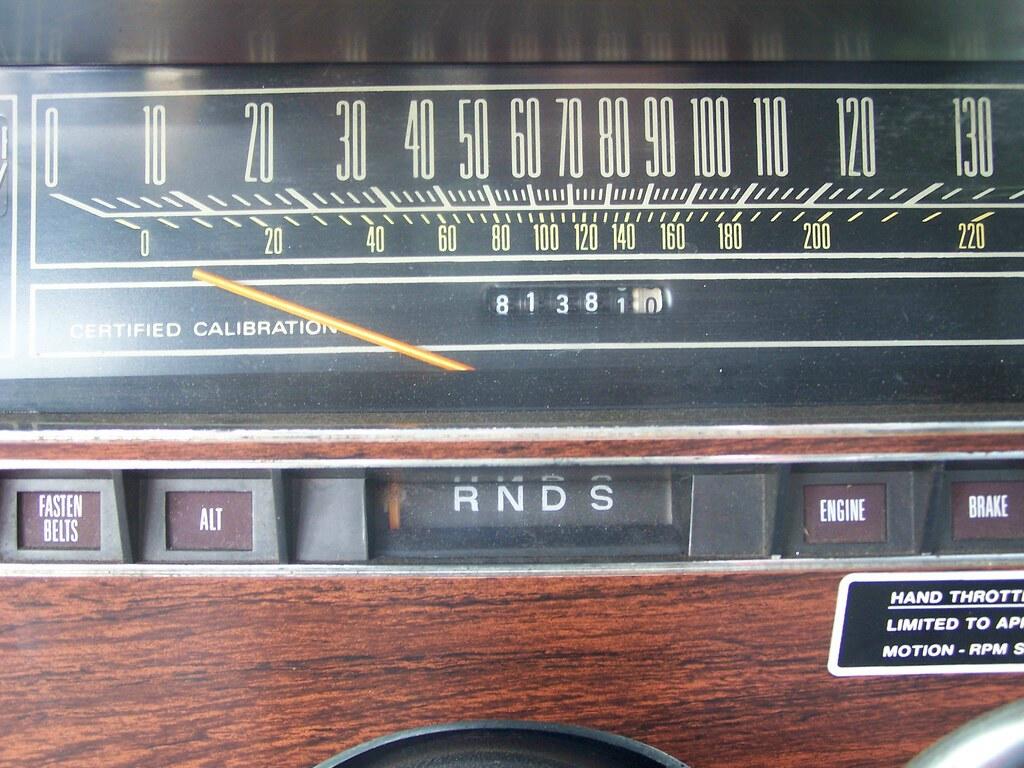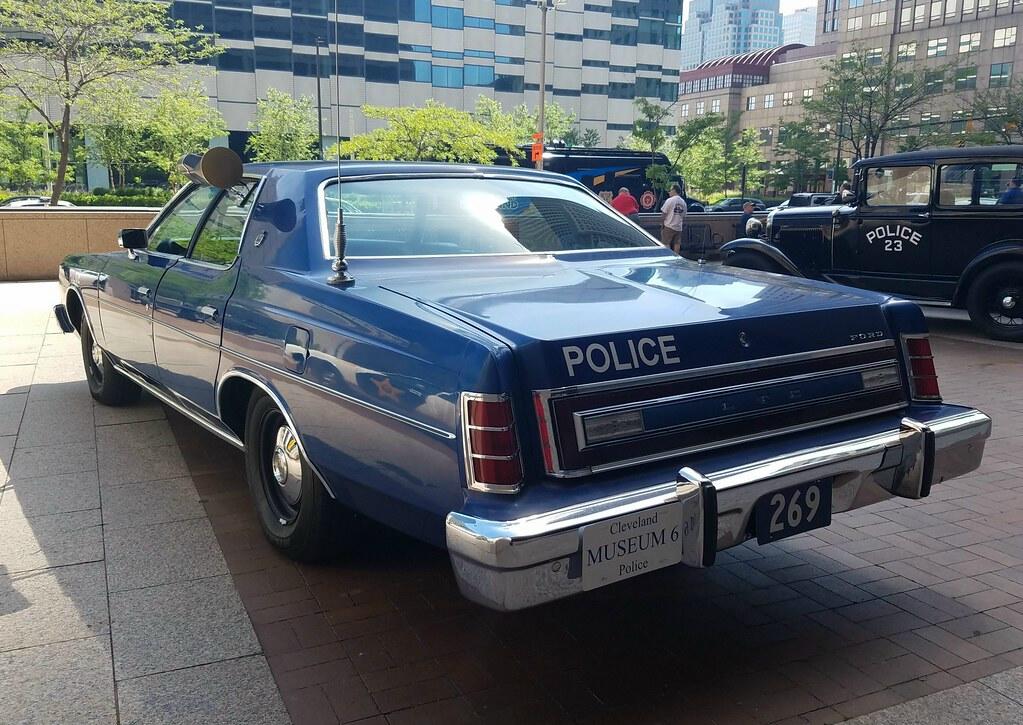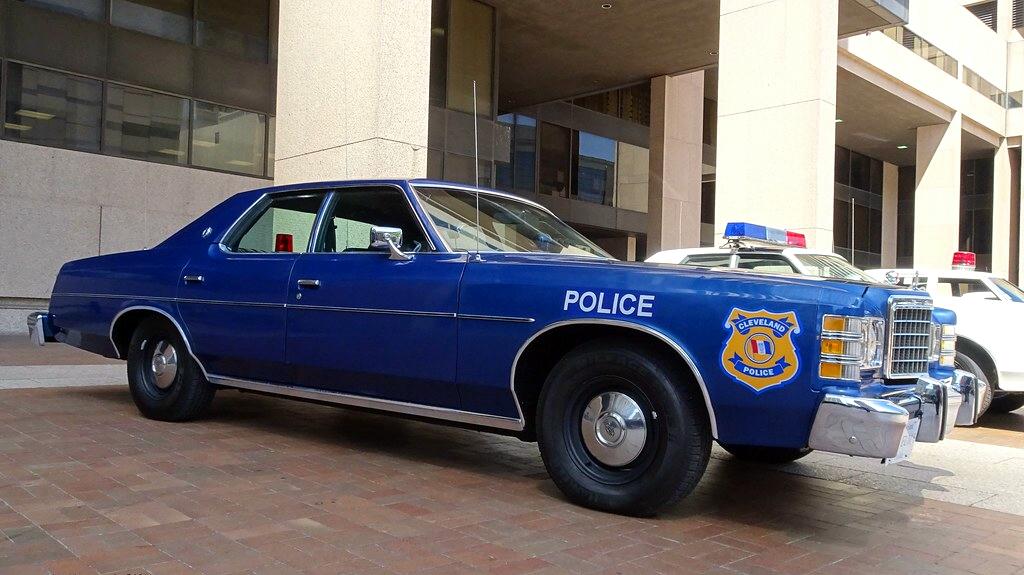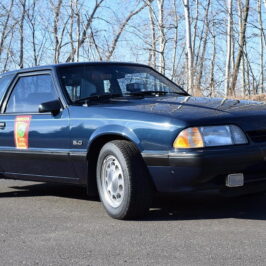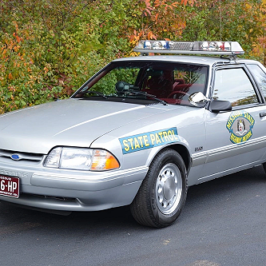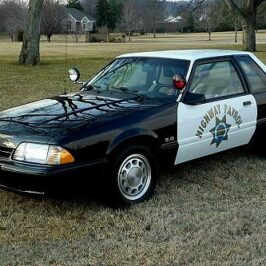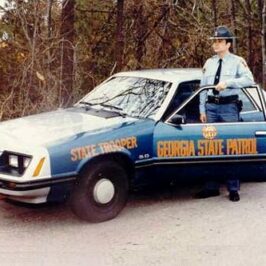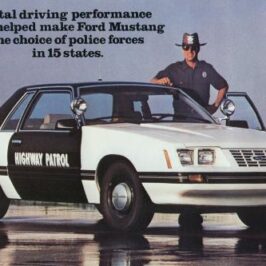Cuyahoga County (Cleveland) is a unique area of Ohio. In fact, I’ve referred to Cuyahoga County in the past as the State of Cuyahoga. They’ve just always had their own unique way of doing things. One of those things in particular is their traffic enforcement vehicles. Typically a police department in Ohio will have cars that all look the same. Some may have an additional marking that designates it as a traffic unit. Columbus Ohio police have ‘Freeway Patrol’ added to their traffic units that patrol the freeways. Cuyahoga County has had some police departments that didn’t add additional markings to designate them as a traffic unit. They actually reduced the markings and overall appearance. Some of their traffic units barely pass for being ‘marked’.
The Cleveland Police Department has had some neat looking traffic units over the years, including the 1978 Ford LTD you see above. It’s actually a beautiful car with its blue paint and gold and blue ‘Cleveland Police’ emblem on the door. Looking at the side of the car, there’s no question that it’s a Cleveland Police car. It definitely jumps out at you. Not so much from the front though. This is from an era where speeding was like a game of cat and mouse. You were the mouse trying to not get caught by this cool blue cat.
Would you know this was a police car if you were approaching it? Looking at the photo, you can see the blue police light on the dash, and a red one in the rear window. You can also see the Kustom Signals MR-7 radar unit on the dash, and the radar antenna on the rear drivers side window. This is a moving radar unit, but the antenna in this position would allow the car to sit on the side of the road, and clock vehicles coming up behind it.
At least the back of the car says ‘Police’. If in fact you’re paying attention. Maybe you got distracted wondering what that round black thing is hanging on the window, and didn’t see the word ‘Police’. Maybe the cop saw you before you saw him.
On October 25, 1979 the Ohio Revised Code section 4549.13 went in to effect stating:
“Any motor vehicle used by a member of the state highway patrol or by any other peace officer, while said officer is on duty for the exclusive or main purpose of enforcing the motor vehicle or traffic laws of this state, provided the offense is punishable as a misdemeanor, shall be marked in some distinctive manner or color and shall be equipped with, but need not necessarily have in operation at all times, at least one flashing, oscillating, or rotating colored light mounted outside on top of the vehicle. The superintendent of the state highway patrol shall specify what constitutes such a distinctive marking or color for the state highway patrol.”
See the blue strobe light on the roof of the blue car? Yes, Whelen made strobe lights back in the 1970’s. This car meets the requirements of this law.
According to a Ford Brochure, the Ford LTD came with the 351 CID, 400 CID, 460 CID, and 460 CID Interceptor. The 460 Interceptor Package was a maximum duty package available only on special car models. It is capable of high speed required for highway and freeway pursuit. The 460 CID 4-barrel (4V) V-8 engine includes a specially balanced crankshaft, hardened exhaust valve seats, and heavy duty oil pump. Maximum performance has been provided through the use of a unique carburetor, low restriction air cleaner, and dual exhaust. Ever heard the secondary’s on a 4-barrel carb open up on a big block V8 with dual exhaust? It’s a beautiful sound. I bet this car not only looks great but sounds great chasing down its prey.
(This photo is from a different 1978 Ford LTD police vehicle to show you what the speedometer looks like)
And of course don’t forget the ‘certified calibration’ speedometer. No, the ‘S’ doesn’t stand for ‘Sport Mode’ like todays vehicles.
According to a Ford Brochure:
“Ford’s versatile automatic transmission provides smooth, even, quiet shifting. The transmission includes a first-gear lock-out feature which is designed to eliminate the possibility of holding the transmission in first gear, as is possible with the regular Cruise-O-Matic transmission. The transmission may be held manually in second gear. When placed in the “Drive” position, the transmission provides fully automatic three speed operation.”
Links:
Cleveland Police Museum – Website


